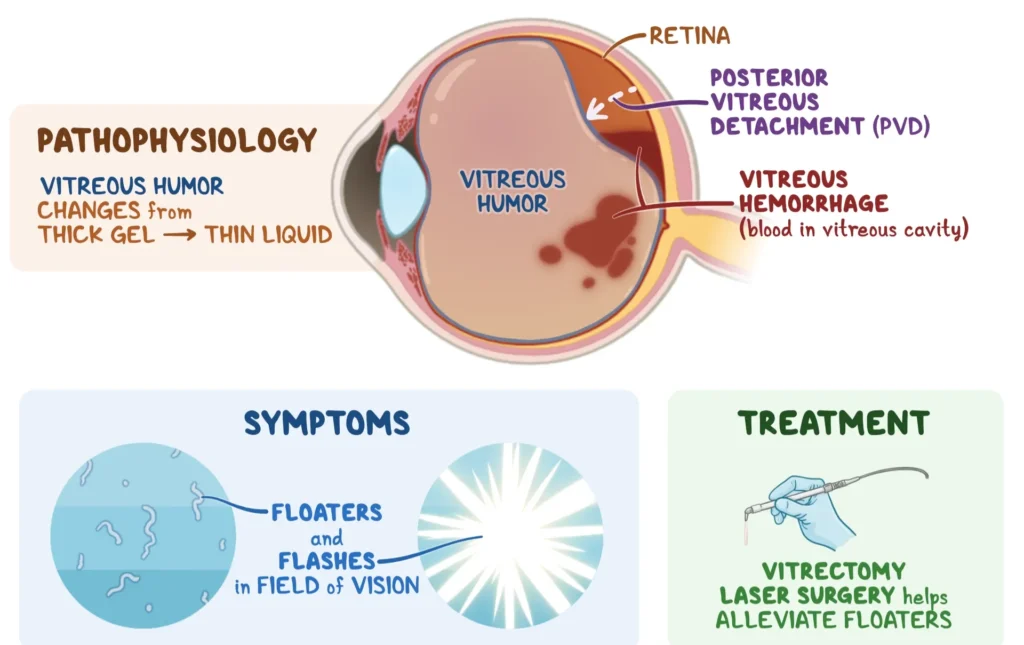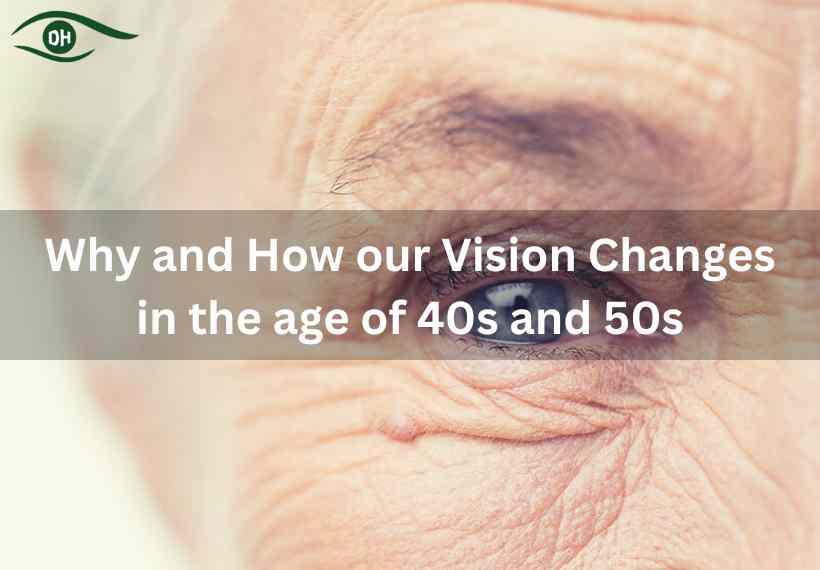As we age, our bodies go through a series of changes, and our eyes are no exception. Vision changes are a common occurrence in our 40s and 50s, often leading to conditions like presbyopia, age-related macular degeneration, and cataracts. This blog post explains the reasons for these changes and gives you helpful advice on how to take care of and keep your eyes healthy during this critical time in your life span. Some of the essential reasons why vision deteriorates during this stage of life are explained to us by Dr. Sanjeev Duggal – a veteran & renowned Opthaolomologist in Jalandhar, Punjab.
Presbyopia: The Crystalline Lens Hardens

Presbyopia is one of the most common changes in vision that comes with getting older. It usually starts in the early 40s. The crystalline lens inside the eye, responsible for focusing on objects at different distances, gradually becomes less flexible and harder with age. This loss of lens flexibility makes it more challenging for the eye to focus on close-up objects, such as when reading or doing close work.
Changes in the Eye’s Retina
The light-sensitive tissue at the back of the eye is called the retina. As we age, the retina also changes. Conditions like age-related macular degeneration (AMD) and diabetic retinopathy can be made worse by changes in the retina that happen with age.AMD can make you lose your center vision, and diabetic retinopathy, which is linked to diabetes, can also make it hard to see.

Reduced Tear Production
decrease in tear production and changes in tear quality has a direct linkage with aging, and such conditions lead to dry eye syndrome. Dry eyes can cause discomfort, blurry vision, and an increased risk of eye infections.
Cataracts
The natural lens of our eye gradually turns cloudy with age, which is a common disease called cataracts or Motiyabind or Motiain the Asian sub-continent. Cataracts can make your vision blurry or hazy, make it hard to see at night, and make you more sensitive to glare.
Changes in Color Perception
As we age, a reduction in the vibrancy of colors and a decreased ability to distinguish between shades of the same color can develop.
Decreased Adaptation to Low Light
The aging eye becomes less efficient at adjusting to low light conditions, which can result in difficulties with night driving and reading in dim light.
Structural Changes in the Eye
Changes in the shape and size of the eye can affect its ability to focus and refract light accurately onto the retina.
Environmental Factors
Long-term exposure to UV light, smoking, and a lousy diet can speed up the changes that come with getting older and raise the risk of eye diseases like AMD and cataracts.
Blog Summary
While age-related vision changes are widespread, they are not consistent for everyone, and the rate and level of degradation might vary. Periodic eye exams are frequently helpful in the continuous monitoring and controlling of these changes. Many age-related vision impairments can be recognized early and treated with suitable procedures such as eyeglasses, contact lenses, or surgery. Remember that a healthy and balanced lifestyle that includes physical activities, proper diet, UV protection, and not smoking will help reduce the advancement of these changes and promote good eye health throughout your 40s and 50s.


